In The Lab: ASRock Radeon RX 5700 XT Taichi X 8G OC+ Graphics Card
by Gavin Bonshor on December 23, 2019 2:00 PM EST- Posted in
- GPUs
- AMD
- Radeon
- ASRock
- X570 Taichi
- Radeon 5700 XT
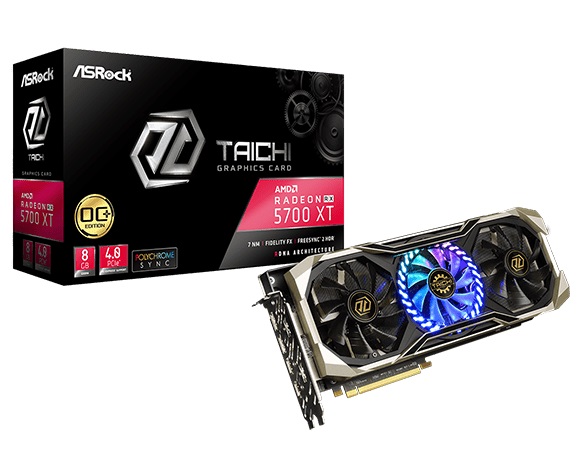
Since AMD unveiled its products on the 7 nm process node, we've seen numerous CPU launches and announcements with the Ryzen 3000 series of processors. Not only processors but graphics cards too with AMD's launch of the RX 5700 and RX 5700 XT graphics cards back in July. Aimed at occupying the mid-range consumer graphics market, both the new Navi 10 graphics cards are based on its RDNA architecture which is completely re-worked from what we've seen from the company in previous releases such as the Polaris based 12 nm cards. As part of our ASRock X570 Aqua build, the company also sent us one of its aftermarket cooled RX 5700 XT cards, specifically the ASRock RX 5700 XT Taichi X 8G OC+ graphics card with 8 GB of GDDR6 VRAM, a boost core clock of up to 2025 MHz, and an effective memory clock of 14 Gbps. We're not doing a full analysis here, but we have takem a look at what's under the hood and done some testing to see how the card compares with what we have in the motherboard testing lab.
The ASRock Radeon RX 5700 XT Taichi X 8G OC+
The ASRock Radeon RX 5700 XT Taichi X 8G OC+ is a premium version of AMD's reference RX 5700 XT with a few key refinements with the aim on pushing mid-range performance to new levels. The reference model is well-known for its unique 'dent' along the top of the card's cooler, but even more unique than this is ASRock's Taichi X design. The RX 5700 XT Taichi X cooler incorporates a 2.5 slot design which makes it beefy, but more than adequate for ATX motherboards which usually leave 3-slot spacing between the two full-length PCIe slots.
As we highlighted in our launch day AMD Radeon RX 5700 XT and RX 5700 review, this isn't the first 7 nm graphics card from AMD (Radeon VII), but it's the first mass-produced consumer 7 nm graphics card in high volumes and one that helps and looks to redefine the mid-range graphics card sector. For comparison, the NVIDIA GeForce RTX 2060 Super is the rival card from the team green at the $399-499 price point.
The ASRock Taichi design is something we have seen implemented successfully on its motherboard range, eg the ASRock Z390 Taichi, the ASRock X399 Taichi, and more recently, the ASRock X570 Taichi. Transitioning the design to its fairly new VGA range, the fabled Taichi cogwheel is found all over the card including the fans, and on the all-metal backplate. The ASRock RX 5700 XT Taichi X also benefits from integrated ARGB LEDs which adds to the design, and the silver fan shroud is designed to fit in with its motherboard designs. It's now commonplace for vendors that manufacturer both motherboard and graphics to align the designs for brand awareness, and it also gives users the ability to create a uniformed look when building a new system. For connectivity there are two HDMI 2.0b, and four DisplayPort 1.4 video outputs.
Dissecting the design of the ASRock Taichi X 8G cooler, the fan shroud houses three Taichi cooling fans, two 90 mm fans and a single 80 mm in the middle with each fan consisting of nine blades. The inside of the shroud around the fans is black, while the outer edging of the shrouds structure is silver. Fully assembled the ASRock 5700 XT Taichi X 8G is 12.7 inches in length and occupies 2.5 PCIe slots when installed into a motherboard.
In between the PCB and cooler of the ASRock 5700 XT Taichi X 8G is a metal frame which serves two main purposes. Firstly the brace helps to reinforce the PCB to reduce bending and flex which is commonly associated with GPU sag when installed into a system. Secondly, the metal frame helps to increase the Taichi X coolers thermal properties with a wider base area for heat dissipation.
On the rear of the card is a 3D metal backplate which assists the metal frame on the other side of the PCB to reduce PCB flex, and hopefully stop bending altogether. The design of the Taichi X backplate is rather interesting with a black and silver background, with ASRock's Taichi branding and cogwheel illustrations. The gold cogwheels are 3D moulded into the backplate with a nice finish, while the black cogwheels are printed on.
Analyzing the PCB of the ASRock Radeon RX 5700 XT Taichi 8G OC+, we can see that it is using a 12-phase power delivery in an 11+1 configuration. This is an improvement over the reference design AMD RX 5700 XT which has a 7+1 design. Regulating the power delivery is an International Rectifier IR35217 PWM controller, while two 8-pin PCIe power inputs provide power directly from the power supply. Surrounding the 7 nm GPU die is eight Micron D9WCW GDDR6 memory chips which operate at 1750 MHz which is 14 Gbps effective.
| AMD Radeon RX Series Specifications Comparison | |||
| ASRock Radeon RX 5700 XT Taichi X 8G OC+ |
AMD Radeon RX 5700 XT Reference |
NVIDIA GeForce RTX 2060 Super |
|
| Stream Processors | 2560 (40 CUs) |
2560 (40 CUs) |
2304 (36 CUs) |
| Texture Units | 160 | 160 | 136 |
| ROPs | 64 | 64 | 64 |
| Base Clock | 1810 MHz | 1605 MHz | 1470 MHz |
| Game Clock | 1935 MHz | 1755 MHz | N/A |
| Boost Clock | 2025 MHz | 1905 MHz | 1650 MHz |
| Memory Clock | 14 Gbps GDDR6 | 14 Gbps GDDR6 | 14 Gbps GDDR6 |
| Memory Bus Width | 256-bit | 256-bit | 256-bit |
| VRAM | 8 GB | 8 GB | 8 GB |
| Board Power (TDP) | 225 W | 225 W | 175 W |
| Manufacturing | TSMC 7 nm | TSMC 7 nm | TSMC 12 nm |
| Architecture | RDNA (1) | RDNA (1) | Turing |
| GPU | Navi 10 | Navi 10 | TU106 |
| Launch Price | $480 | $399 | $399 |
When compared directly to the reference model, the ASRock RX 5700 XT Taichi X 8G OC+ comes with a hefty out of the box overclock when compared to stock. This is a 12% increase in base clock frequency, with game clock getting a 10% bump, and maximum boost clocks seeing a jump in frequency by just over 6%. The ASRock RX 5700 XT Taichi X 8G OC+ has a current selling price of $480, which is an $80 bump over the reference RX 5700 XT model at $399. NVIDIA's competing graphics card in this price segment is the NVIDIA GeForce RTX 2060 Super, with aftermarket versions available for roughly the same price as aftermarket RX 5700 XT's.
Test Bed and Gaming Performance
| Test Setup | |||
| Processor | AMD Ryzen 3700X, 65W, $329 8 Cores, 16 Threads, 3.6 GHz (4.4 GHz Turbo) |
||
| Motherboard | MSI MEG X570 Ace (BIOS 7C35v16 - AGESA 1.0.0.4 B) | ||
| Cooling | AMD Wraith Prism RGB | ||
| Power Supply | Thermaltake Toughpower Grand 1200W Gold PSU | ||
| Memory | 2x8GB G.Skill TridentZ DDR4-3200 16-16-16-36 2T | ||
| Video Cards | ASRock RX 5700 XT Taichi 8G OC+ (1810/2025 Boost) AMD Radeon RX 5700 XT (1605/1905 Boost) NVIDIA GeForce RTX 2060 Super (1470/1650 Boost) MSI GTX 1080 Gaming 8G (1632/1771 Boost) |
||
| Graphics Driver | AMD - Adrenaline 19.11.3 NVIDIA - 441.20 WHQL |
||
| Hard Drive | Crucial MX300 1TB | ||
| Case | Open Benchtable BC1.1 (Silver) | ||
As mentioned, today we are comparing against what we have in the motherboard lab. Unfortuantely our GPU lab is on the other side of the world, but we were lucky enough to get hold of a few other cards for comparison.
Gaming: Grand Theft Auto V
The highly anticipated iteration of the Grand Theft Auto franchise hit the shelves on April 14th 2015, with both AMD and NVIDIA in tow to help optimize the title. GTA doesn’t provide graphical presets, but opens up the options to users and extends the boundaries by pushing even the hardest systems to the limit using Rockstar’s Advanced Game Engine under DirectX 11. Whether the user is flying high in the mountains with long draw distances or dealing with assorted trash in the city, when cranked up to maximum it creates stunning visuals but hard work for both the CPU and the GPU.
For our test we have scripted a version of the in-game benchmark. The in-game benchmark consists of five scenarios: four short panning shots with varying lighting and weather effects, and a fifth action sequence that lasts around 90 seconds. We use only the final part of the benchmark, which combines a flight scene in a jet followed by an inner city drive-by through several intersections followed by ramming a tanker that explodes, causing other cars to explode as well. This is a mix of distance rendering followed by a detailed near-rendering action sequence, and the title thankfully spits out frame time data.
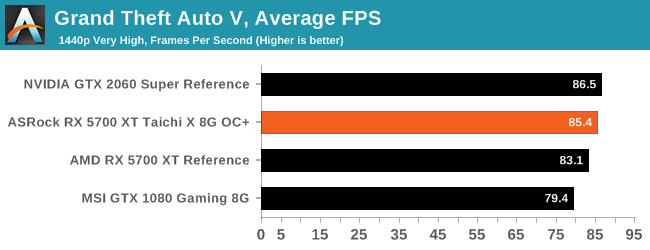

It's no secret that NVIDIA cards perform better in Grand Theft Auto V than AMD's counterparts, and our results follow this trend. The ASRock RX5700 XT Taichi X 8G performs around 2 frames per better than the reference Radeon RX 5700 XT model in our testing.
Gaming: Strange Brigade (DX12)
Strange Brigade is based in 1903’s Egypt and follows a story which is very similar to that of the Mummy film franchise. This particular third-person shooter is developed by Rebellion Developments which is more widely known for games such as the Sniper Elite and Alien vs Predator series. The game follows the hunt for Seteki the Witch Queen who has arose once again and the only ‘troop’ who can ultimately stop her. Gameplay is cooperative centric with a wide variety of different levels and many puzzles which need solving by the British colonial Secret Service agents sent to put an end to her reign of barbaric and brutality.
The game supports both the DirectX 12 and Vulkan APIs and houses its own built-in benchmark which offers various options up for customization including textures, anti-aliasing, reflections, draw distance and even allows users to enable or disable motion blur, ambient occlusion and tessellation among others. AMD has boasted previously that Strange Brigade is part of its Vulkan API implementation offering scalability for AMD multi-graphics card configurations.

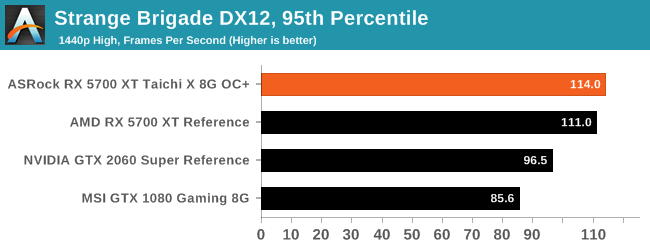
In Strange Brigade, the results are different from GTA V, with the ASRock RX 5700 XT Taichi X 8G flexing its muscles with a comfortable lead over NVIDIA's GTX 2060 Super reference card. Compared with the reference RX 5700 XT, the ASRock RX 5700 XT Taichi X 8G comfortably leads by 3 frames on average and in 95th percentile.
Gaming: F1 2018
Aside from keeping up-to-date on the Formula One world, F1 2017 added HDR support, which F1 2018 has maintained; otherwise, we should see any newer versions of Codemasters' EGO engine find its way into F1. Graphically demanding in its own right, F1 2018 keeps a useful racing-type graphics workload in our benchmarks.
Aside from keeping up-to-date on the Formula One world, F1 2017 added HDR support, which F1 2018 has maintained. We use the in-game benchmark, set to run on the Montreal track in the wet, driving as Lewis Hamilton from last place on the grid. Data is taken over a one-lap race.
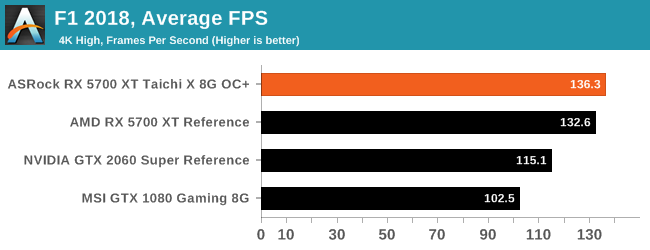
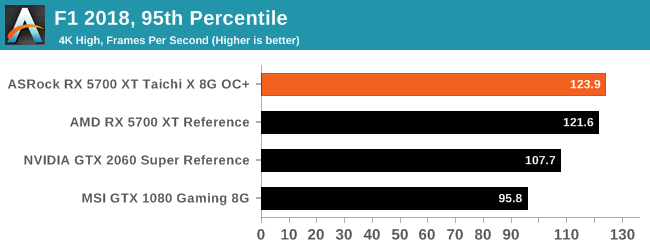
In F1 2018, the AMD RX 5700 XT models decimate the NVIDIA GeForce RTX 2060 Super. The ASRock RX 5700 XT Taichi X 8G leads the NVIDIA RTX 2060 Super by around 21 frames at average, and by around 16 frames in our 95th percentile testing.
Final Words
The ASRock RX 5700 XT Taichi X 8G OC+ is one of many custom-designed Radeon RX 5700 series models to hit the market in a large wave. Within our three games, the ASRock RX 5700 XT Taichi X 8G OC+ graphics card comfortably won two of them, with the NVIDIA GeForce RTX 2060 Super comfortably taking the crown in Grand Theft Auto V; this is due to in-game optimizations which favors NVIDIA graphics cards.
One of the most interesting aspects is the design; the ASRock Taichi design is one of its most marketable and well-known brands. Coupled with a Z390 Taichi, or X570 Taichi motherboard, the ASRock RX 5700 XT Taichi X 8G OC+ plus makes a partner with its similar designs, and the RX 5700 XT series is a solid mid-range option. While a reference AMD Radeon RX 5700 XT costs $399, the uprated and better cooled ASRock RX 5700 XT Taichi X 8G OC+ costs $480; a rise of $81 for an aftermarket card over the reference design.
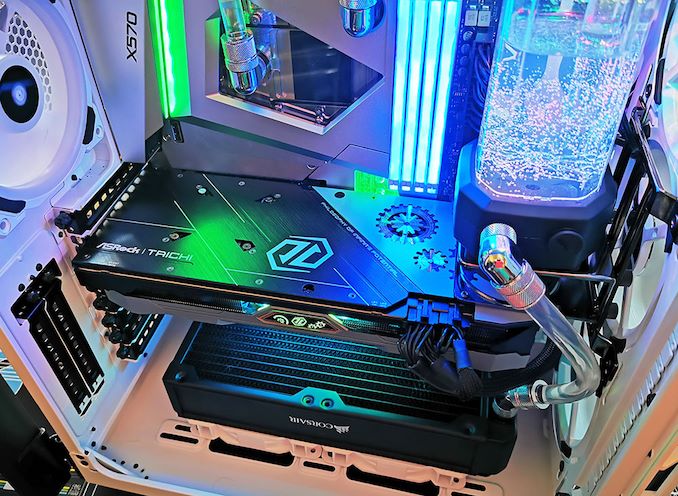
ASRock X570 Aqua with AMD Ryzen 3950X and ASRock RX 5700 XT Taichi X 8G OC+
It has style, it has a goodcooler, and the hardware itself is more than capable of overclocking and achieving higher clocks than comes default out of the box; it already comes with a noticeably powerful out of the box overclock. For that reason alone, it's worth it over the reference model. The other alternatives in this price segment are the NVIDIA GeForce RTX 2060 Super reference at $399, and various models via vendors featuring aftermarket coolers.


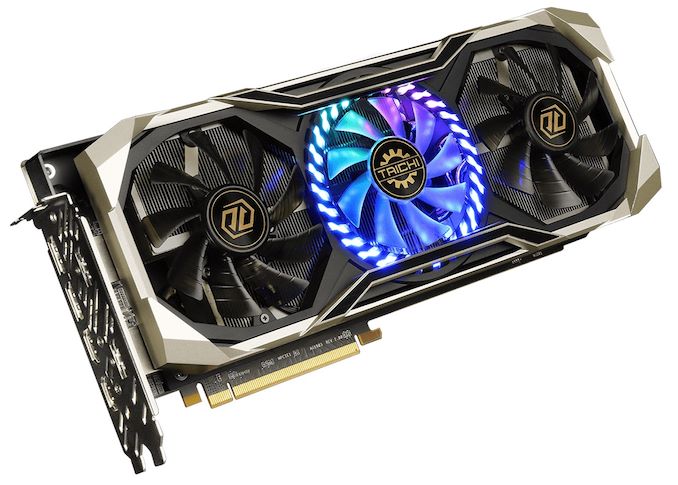
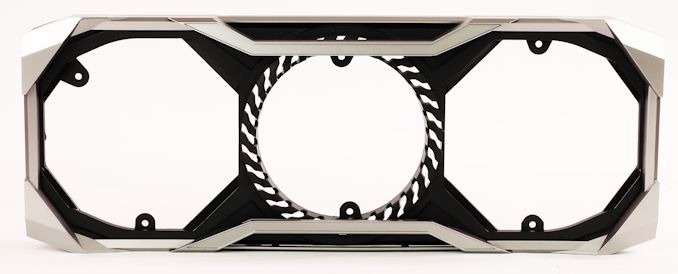
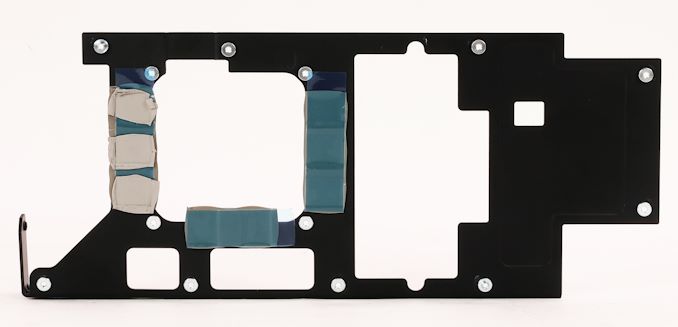
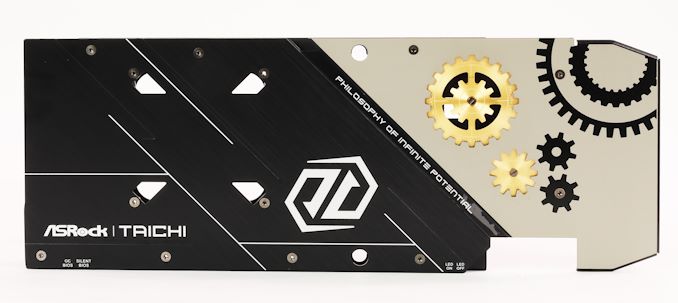
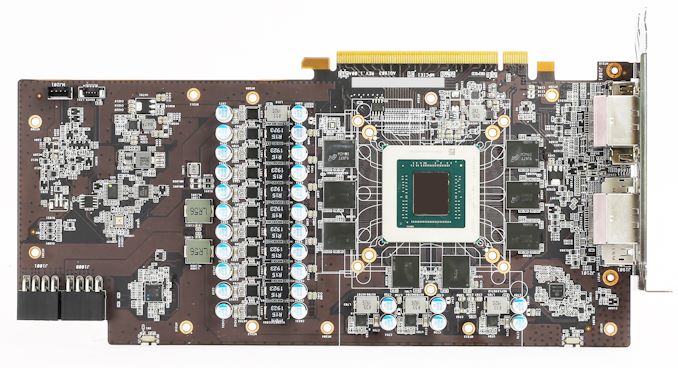

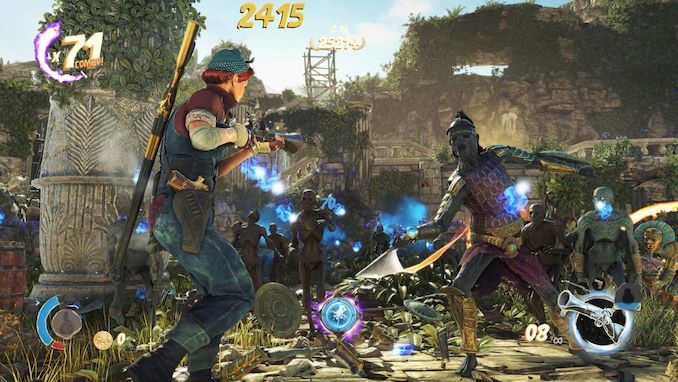
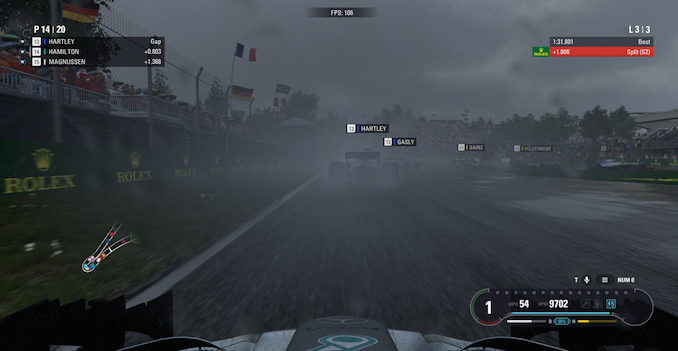








15 Comments
View All Comments
parmand - Monday, December 23, 2019 - link
How come all of the pictures say "GTX980" on the titles? I'm assuming thats a typo?gavbon - Monday, December 23, 2019 - link
Yeah it was, I fixed it now. apologies!sorten - Monday, December 23, 2019 - link
The "GTX 980" labels on all of the benchmarks are confusing, and how did the ASRock card end up with more texture units than the reference card?Otherwise, impressive performance relative to the 2060 Super.
gavbon - Monday, December 23, 2019 - link
Fixed that, was a typo. Apologieseastcoast_pete - Monday, December 23, 2019 - link
Agree that this is a capable card. Unfortunately, they also overclocked the price! If the cost would be eye level with the 2060Super, the ASRock 5700XT would be a logical choice. At current pricing, that difference alone buys some more or faster RAM or pays for the step up to the next better CPU.Ninhalem - Monday, December 23, 2019 - link
Partially agree. Newegg has the ASRock card at $450 which is inline with what most 2060 Super cards go for at the moment. You're going to have a hard time finding a "decent" 2060 Super at $400.catavalon21 - Tuesday, December 24, 2019 - link
NV sells the 2060 Super directly for $399. Is this not a "decent" one?stephenbrooks - Tuesday, December 24, 2019 - link
Yes, $480 is not "mid-range" by any stretch of the imagination. The GTX 1650/1660 area ($150-220) is mid-range in terms of budget now. I suppose "entry level" has been almost entirely catered for by integrated graphics at this point.lilkwarrior - Thursday, December 26, 2019 - link
What you're saying is stating the obvious "If the cost would be eye level with the 2060Super, the ASRock 5700XT would be a logical choice".Of course, but it won't because the GPU horsepower capabile by this card didn't come cheap to justify that + loss of target margins.
All that said, those sort of gains + loss of functionality the intrinsic Turing have over current Navi (Ray-tracing, VirtualLink, CUDA, & so on) aren't worth it for most who pay attention to what the next gen is pushing & what Turing enables today.
At this time, longevity & value is severely questionable w/ Navi as it is today till AMD updates their architecture to catch up w/ Nvidia; accordingly getting Turing today or waiting for AMD 2020+ w/ Ray-tracing & so on is a very reasonable stance to take for most
TheinsanegamerN - Monday, December 23, 2019 - link
Interesting you guys didnt test power usage:https://www.tomshardware.com/reviews/asrock-rx-570...
An extra 30-40 watts of power compared to the gigabyte 5700xt gaming for a whopping 1-2 FPS increase. Imagine how much cooler and quieter these cards would be if AIBs stopped ramming tons of power through them. The 5700XT DOESNT HAVE OC HEADROOM.